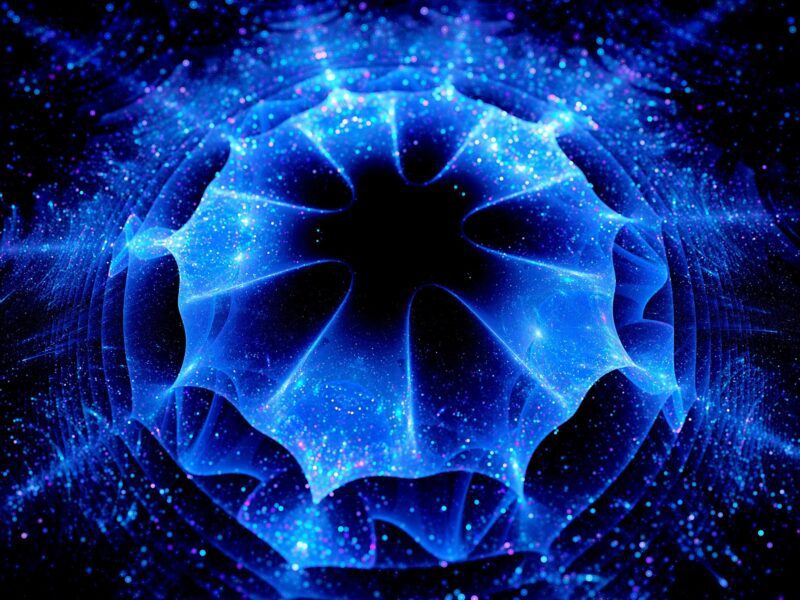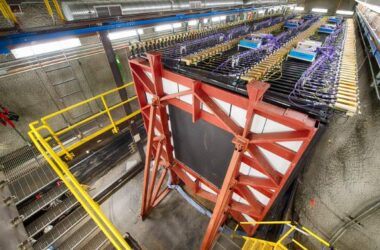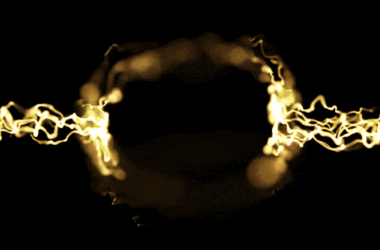
Des scientifiques ont observé pour la première fois un état quantique inhabituel de la matière.
Le physicien Andrea Bianchi a observé l’état de “liquide de spin quantique” dans un matériau magnétique créé dans son laboratoire.
Ce n’est pas tous les jours que l’on découvre un nouvel état de la matière en physique quantique, le domaine scientifique consacré à la description du comportement des particules atomiques et subatomiques afin de comprendre leurs propriétés.
C’est pourtant exactement ce qu’a fait une équipe internationale de chercheurs. L’équipe comprend Andrea Bianchi, professeur de physique à l’Université de Montréal et chercheur au Regroupement québécois sur les matériaux de pointe, et ses étudiants Avner Fitterman et Jérémi Dudemaine.
Dans un article récent publié dans la revue scientifique Physical Review Xles scientifiques documentent un “état fondamental de liquide de spin quantique” dans un matériau magnétique créé dans le laboratoire de Bianchi : Ce2Zr2O7Un composé composé de cérium, de zirconium et d’oxygène.

Andrea Bianchi
Comme un liquide enfermé dans un solide extrêmement froid
En physique quantique, le spin est une propriété interne des électrons liée à leur rotation. C’est le spin qui confère au matériau d’un aimant ses propriétés magnétiques.
Dans certains matériaux, le spin se traduit par une structure désorganisée semblable à celle des molécules dans un liquide, d’où l’expression ” liquide de spin. “
En général, un matériau devient plus désorganisé lorsque sa température augmente. C’est le cas, par exemple, lorsque l’eau se transforme en vapeur. Mais la principale caractéristique des liquides de spin est qu’ils restent désorganisés même lorsqu’ils sont refroidis à une température aussi basse que absolute zero (–273°C / –459.67°F).
Spin liquids remain disorganized because the direction of spin continues to fluctuate as the material is cooled instead of stabilizing in a solid state, as it does in a conventional magnet, in which all the spins are aligned.

Avner Fitterman
The art of “frustrating” electrons
Imagine an electron as a tiny compass that points either up or down. In conventional magnets, the electron spins are all oriented in the same direction, up or down, creating what is known as a “ferromagnetic phase.” This is what keeps photos and notes pinned to your fridge.
But in quantum spin liquids, the electrons are positioned in a triangular lattice and form a “ménage à trois” characterized by intense turbulence that interferes with their order. The result is an entangled wave function and no magnetic order.
“When a third electron is added, the electron spins cannot align because the two neighboring electrons must always have opposing spins, creating what we call magnetic frustration,” Bianchi explained. “This generates excitations that maintain the disorder of spins and therefore the liquid state, even at very low temperatures.”
So how did they add a third electron and cause such frustration?

Jérémi Dudemaine
Creating a ménage à trois
Enter the frustrated magnet Ce2Zr2O7 created by Bianchi in his lab. To his already long list of accomplishments in developing advanced materials like superconductors, we can now add “master of the art of frustrating magnets!”
Ce2Zr2O7 is a cerium-based material with magnetic properties. “The existence of this compound was known,” said Bianchi. “Our breakthrough was creating it in a uniquely pure form. We used samples melted in an optical furnace to produce a near-perfect triangular arrangement of atoms and then checked the quantum state.”
It was this near-perfect triangle that enabled Bianchi and his team at UdeM to create magnetic frustration in Ce2Zr2O7. Working with researchers at McMaster and Colorado State universities, Los Alamos National Laboratory, and the Max Planck Institute for the Physics of Complex System in Dresden, Germany, they measured the compound’s magnetic diffusion.

A sample of the frustrated cerium-based magnet, Ce2Zr2O7, designed in Andrea Bianchi’s lab. Credit: University of Montreal
“Our measurements showed an overlapping particle function—therefore no Bragg peaks—a clear sign of the absence of classical magnetic order,” said Bianchi. “We also observed a distribution of spins with continuously fluctuating directions, which is characteristic of spin liquids and magnetic frustration. This indicates that the material we created behaves like a true spin liquid at low temperatures.”
From dream to reality
After corroborating these observations with computer simulations, the team concluded that they were indeed witnessing a never-before-seen quantum state.
“Identifying a new quantum state of matter is a dream come true for every physicist,” said Bianchi. “Our material is revolutionary because we are the first to show it can indeed present as a spin liquid. This discovery could open the door to new approaches in designing quantum computers.”
Frustrated magnets in a nutshell
Magnetism is a collective phenomenon in which the electrons in a material all spin in the same direction. An everyday example is the ferromagnet, which owes its magnetic properties to the alignment of spins. Neighboring electrons can also spin in opposite directions. In this case, the spins still have well-defined directions but there is no magnetization. Frustrated magnets are frustrated because the neighboring electrons try to orient their spins in opposing directions, and when they find themselves in a triangular lattice, they can no longer settle on a common, stable arrangement. The result: a frustrated magnet.
Reference: “Case for a U(1)p Quantum Spin Liquid Ground State in the Dipole-Octupole Pyrochlore Ce2Zr2O7” by E. M. Smith, O. Benton, D. R. Yahne, B. Placke, R. Schäfer, J. Gaudet, J. Dudemaine, A. Fitterman, J. Beare, A. R. Wildes, S. Bhattacharya, T. DeLazzer, C. R. C. Buhariwalla, N. P. Butch, R. Movshovich, J. D. Garrett, C. A. Marjerrison, J. P. Clancy, E. Kermarrec, G. M. Luke, A. D. Bianchi, K. A. Ross and B. D. Gaulin, 20 April 2022, Physical Review X.
DOI: 10.1103/PhysRevX.12.021015



